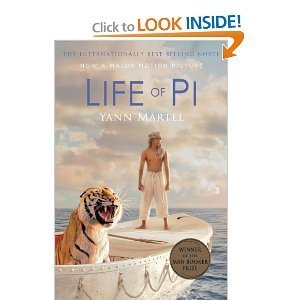Carol Anita Ryan's Blog, page 6
March 3, 2013
Read a free eBook this week!
Smashwords.com distributes an eBook edition of Right Now Is Perfect (as well as thousands of other titles) in all major eBook formats. During the week of March 3rd through March 9th, a special ‘read an eBook’ celebration is underway. To support this effort I’m making my book free (use the coupon RW100 during checkout). If you’d like a copy, or know someone who might, this is an opportunity to get it free. Just go to
https://www.smashwords.com/books/view/29559
It’s an adventure in paradise when a mid-life divorcee ditches her IT career to sail across the Pacific with a new lover but then the unexpected happens.
Even if you’ve already got your copy of my book, there are many other books for free this week at Smashwords.com.
February 27, 2013
A review of ‘Past the Last Island’
While sailing through the islands of the South Pacific a few years ago, I had a recurring question, ‘How did these isolated islands get populated?’ There are many unknowns but our knowledge is expanding thanks to fields of science providing tantalizing clues about the genetic, linguistic, and physical culture of the people of the South Pacific.
But, until more is known, you can be thoroughly entertained by the excellent new book by Kathleen Flanagan Rollins, ‘Past the Last Island’ a speculative prehistory of the area circa 14000 years ago.
A group of islanders face a variety of problems forcing some to sail past the last known island in search of a new home. In this quest, they develop new boat designs as well as many other inventions that allow for long distance ocean travel.
Rollins creates a robust universe populated by individuals who engage in complex games and intricate life skills. Difficult problems are solved by imaginative and creative solutions undertaken by cooperating groups of people. Not everyone is good or positive and not everything goes perfectly, but it’s always interesting to see how the characters will react and what will happen.
This novel will allow you to escape into a fully formed world, with plenty of interesting things to consider. It’s hard not to wonder if people from our culture could ever manage such feats.
February 19, 2013
A Tale of Survival
Memory, history, and demographics all play a role in a person’s understanding of the world. For the first years of the baby boomer generation, only a few years separate history from memory in the case of World War II. I am such an early baby boomer. Although born in California and raised during the 1950s in the greater Washington D. C. area, I never heard my dad or any of his peers (virtually all the males of which were veterans) talk about the then- recent war.
As a child, even as a young adult, World War II seemed ancient history to me: not something having an influence on my life. That is a fluke of my childhood memory. To get a very different perspective on memory and history of the war, you can’t do better than to read, A Tale of Survival: From War-Ravaged Europe To The Promise of America by Tom Kando.
Tom was born in Hungary in 1941. As such his earliest memories occurred right in the middle of the conflict. He and his family experienced German and Russian invasions before fleeing to France. Thus Tom spent the 1950s in post-war-torn France (a far cry from my suburban D.C. world). Tom later moved to Holland before coming alone to this country as a Fulbright Scholar.
Kando has had an amazing life according to his book which straddles the line between memoir and historical fiction. Whether true or imagined, the first portion of the book does an amazing job of bringing to light the sensibilities of a bright child in that time and place. Kando shows how a young boy idealized his beautiful and talented parents, how he resented his younger siblings, and how a child experienced the reality of foreign soldiers occupying his home (not just his country). I’d never thought about the difficulties of growing up in Europe right after the war. Kando does a wonderful job of revealing events though the eyes of a gifted and insightful child.
The story continues in America during the 1960s nearly to the present. Perhaps because some of that time and place is familiar territory, I found it less compelling. But, for me, the insight into Europe during and after the war seen by someone fairly close to my age was priceless.
February 10, 2013
A modern Victorian suspence novel
Dirty dishes in the sink, half-read books tossed aside, favorite TV programs languishing unwatched on the DVR: evidence of how far I surrendered blissfully and completely to ‘A Woman in White’. The book was first written as a serial magazine story (in 1859) by Wilkie Collins a sometime collaborator with Charles Dickens. The pacing and plot architecture is superb. For a Victorian novel it seems modern—perhaps because the author, someone I’d never heard of, lived a very flamboyant life which started out in Italy where his father had been an artist.
Collins first experienced Victorian England as a teen sent there to school, which seems to have allowed him to view the society as a keen participant/observer. His characters are well-drawn and often laugh out loud funny. One of the most interesting female characters in Victorian literature, Marian, as well as one of the most cunning villains of all time, Count Fosco, are to be found in this story. The author shows us in various interesting ways how people of different sensibilities and class react to problems. Mysteries are solved; rich villains are defeated by cleverness and persistence of middle class heroes. It’s a great story full of vivid almost cinematic scenes and engaging characters. All of this exists in a story about stolen identity, and inheritance issues — run of the mill themes of Victorian novels. And yet I couldn’t put the book down.
January 13, 2013
My evening with Bill Clinton
I recently spent an evening listening to one of the great speakers of our time. One of the things he spoke about was how his upbringing helped him. Until the age of ten, his family had no television so entertainment consisted of tales told around the dinner table. The rule before speaking was that you had to first retell the previous person’s story. In other words, before speaking it was necessary to master the art of listening.
Actually sharing a meal around a table of conversationalists might be just as rare as finding a family without a TV today. But, learning to listen well enough to retell someone else’s story is a valuable tool.
Another tip from former President Clinton about influences from his childhood was the importance of showing children possibilities. When Bill was about twelve, the then Governor of Arkansas allowed school children to visit the Governor’s office. During a school field trip, Bill sat at the Governor’s desk and imagined for the first time a future course of his life. Sometimes a small thing can be a huge thing in the life of a child. Whatever else we do in our lives, taking an opportunity to encourage a child is always a good thing.
Clinton also encouraged me to listen to those I disagree with. First, because none of us are always right. There will be times when adversaries have good ideas. Also, by listening and appreciating good ideas of others, there is a better chance for success in getting my own ideas to succeed. I found this advice hardest to accept.
He also reminded me to allow my adversaries to save public face—even if I have to be tough behind closed-doors.
Bill Clinton looked almost frail. He is now an older man who has become a vegan and has dropped weight since his time as President. However, he never paused or stumbled for a word during his fascinating, fact-filled two hour talk. He was charming, eloquent and direct. It only seemed like he was talking to me. There were thousands equally enthralled in the auditorium.
January 5, 2013
Art & Comedy Central: review of Sacre Bleu
Sacre Bleu: A Comedy d’Art by Christopher Moore is part art history essay part comedy central cartoon. The novel is set in the late 19th Century art world in Paris. The first ¾ of the book weaves a crazy quilt of fact and fiction based on some of the well-known artists of Impressionism and Post-Impressionism along with a few fantastically fictitious characters. Fans of art history will enjoy the details of the artists and models) and life in Paris of the late 1800s. There is a fast paced plot with lots of comedic asides that work well together and kept me reading and wondering how the story would turn out.
I genuinely enjoyed most of the book, despite its sometimes sophomoric humor. But then there is the last part of the book, which tried to cast two of the main characters back into pre-historic cave dwelling days. That part seemed detached from the rest of the story, hurried, and went beyond being far-fetched into the realm of the ridiculous. The book would have been better had it been shorter. An underlining concept—the role of muse and artist in the creation of art—is a worthy thing to contemplate. Also interesting was learning more about the origin of blue in oil painting –aquamarine from the lapis stone found primarily in Afghanistan.
December 27, 2012
The Life of Pi: a movie of wonder
While floating aimlessly on a small boat in the middle of the Pacific, there are times, trust me, when you and any companions will reveal unpleasant aspects of character. There are plenty of works of art portraying this well-worn phenomenon. One of the most visually stunning and emotionally evocative of them is the 3D movie, The Life of Pi. I strongly suggest seeing the movie and avoiding that particular real-life adventure. The director, Ang Lee, has managed to compress the beauty and terror of a Pacific crossing (along with some fantasy extras) into a couple hours in his brilliant adaptation of the novel. I rarely see a movie that equals the book it was based upon, but this one does.
The story sets up a tragic and dramatic situation: a storm at sea where almost everyone is lost. The survivors are an Indian teenager and several other beings. For most of the film the Indian boy struggles to survive in violent storms and lulling calm with several escaped zoo animals that had been on the ill-fated cargo ship with him. As if escaping a sinking ship during a storm isn’t bad enough; how about sharing the lifeboat with a hyena, an orangutan, a zebra, and a tiger?
There are real life wonders like flying fish and bio-luminescence and there are other things going on that may turn out to be fanciful. There is a lot to ponder in this beautiful film.
December 6, 2012
The Devil’s Highway–A true story brilliantly told
This is a book I would not have chosen to read and in fact the first few pages confirmed my fear it would be a depressing book about a depressing subject. I was wrong. The book had been chosen by my book group so I had to persist. Soon the book became surprisingly compelling even though the gruesome end was never in doubt. The author brilliantly tells the true story of a group of men who died (or nearly died) in the Arizona desert in May 2001.
Luis Alberto Urrea does so by revealing meaningful details about all the people in this tragic event. He displays the diverse backgrounds of the Mexicans crossing the border—giving a visceral understanding or where they were actually and metaphorically coming from. The book might have stopped there with an emotional story of their pain and suffering and their appalling ignorance of the desert (many of the men had come from the lush wet tropics and had no idea of the importance of simple things like wearing a hat or not wearing black pants). But, to his credit, the author goes beyond that and presents background on all the players: the border patrol, the local residents who are plagued by problems resulting from people walking across the border, and the others involved in this dangerous and expensive activity. In sometimes poetic phrases we learn about the desert, the heat, stages of death by heat and thirst. The result is a realization of the true tragic quality of the illegal immigration problem. Everyone involved in this story labored under misconceptions or gross ignorance that led to a terrible outcome. Worse, there seems no clear path toward stopping or even tamping down the problem. All you can say after reading the book is you have a much better grasp of the issues facing the parties near the border. That may not be enough, but it is something worthwhile.
November 17, 2012
The Guestbook could reset your mood
 There is a perfect time to read this book: whenever you need to. I’d just finished reading a novel about North Korea where everyone was starving and lying and many were being tortured. It was a man’s story. This book is at the other end of the spectrum. There may be a danger of weight gain from reading about so much great food, but otherwise The Guestbook is a delicious vicarious vacation. The setting, a Bed and Breakfast on an island in Puget Sound is delightful. The cast of characters (primarily female) work together to resolve the heroine’s broken heart and spirit as in most romance novels. There is an amazing focus on cooking and enjoying food—with real recipes at the end of the story. In short, it provides a good story with interesting characters in a beautiful setting. It is an enjoyable read, the kind of book you savor.
There is a perfect time to read this book: whenever you need to. I’d just finished reading a novel about North Korea where everyone was starving and lying and many were being tortured. It was a man’s story. This book is at the other end of the spectrum. There may be a danger of weight gain from reading about so much great food, but otherwise The Guestbook is a delicious vicarious vacation. The setting, a Bed and Breakfast on an island in Puget Sound is delightful. The cast of characters (primarily female) work together to resolve the heroine’s broken heart and spirit as in most romance novels. There is an amazing focus on cooking and enjoying food—with real recipes at the end of the story. In short, it provides a good story with interesting characters in a beautiful setting. It is an enjoyable read, the kind of book you savor.
That said, I had a few problems. There is a bit too much California bashing—even though that is a common hobby in the northwest—it was overdone. The main character eats heartily but never exercises and yet remains thin. Crape Myrtles don’t grow in western Washington and if some micro climate and green house allowed it to happen they could never bloom on July Fourth. There might be a displaced southerner or two who’d say ‘Come on in’, but a northwest native would simply say, ‘Come in’ or ‘Please come in’—yet every character was constantly imploring ‘Come on in.’ The main character’s father never materializes despite tantalizing hints he will. The hero has super-hero patience and even for a romance novel, he seemed too good to be true. Still, if you are in the mood for it, you’ll love The Guestbook.
November 12, 2012
The Orphan Master’s Son review
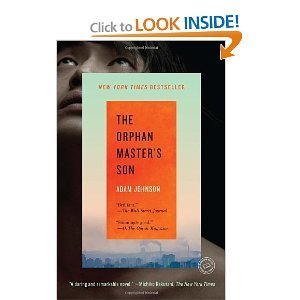
The Orphan Master’s Son a novel set in North Korea
While reading ‘The Orphan Master’s Son’ I frequently pondered that existential question ‘Is it always a good thing to be alive?’ That is also a question influenced by Buddhist philosophy which stresses the rare blessing of a ‘precious human rebirth’ in the quest for enlightenment.
In North Korea a strange mixture of totalitarianism and whimsy allows ‘the dear leader’ to harness the worst aspects of the human psyche into a State dominated by fear and loss. Adam Johnson’s novel explores what it might be like to live in such a setting. It’s a setting where it’s hard to see the worth of being alive, or of being human.
The main character, a Korean version of John Doe, and several people from different walks of life associated with him, tell their stories. Everyone suffers. Almost everyone is forced to abandon loved ones or betray them in horrific ways. Most characters experience extreme violence and torture. The author gratuitously piled on gruesome descriptions of pain and suffering way beyond was necessary to make his point. Yes, power corrupts and absolute power corrupts absolutely. Johnson made that case, but then he seemed to slip into the mind of a sociopath enjoying the tortures he dreamed up.
I applaud Adam Johnson for setting a novel in North Korea, a place few of us know anything about. Exploring the effects on human consciousness of extreme poverty, police state tactics, and the cult of the ridiculous individual was commendable. If only there had been less of parable and more of a real story, this could have been an important book.

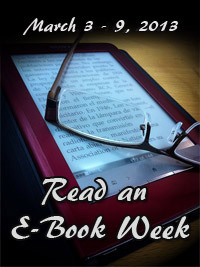
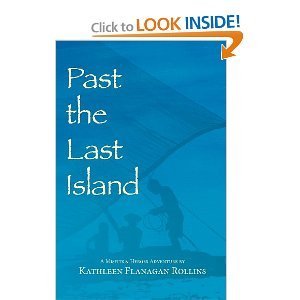
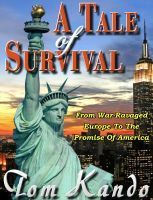
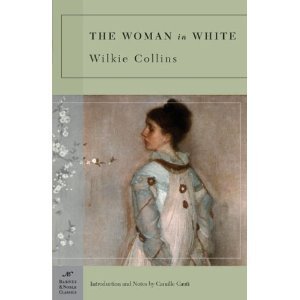

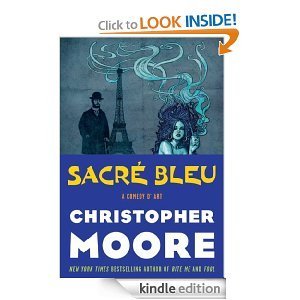
![Lapis_lazuli_block[1]](https://i.gr-assets.com/images/S/compressed.photo.goodreads.com/hostedimages/1405212215i/10362749.jpg)
